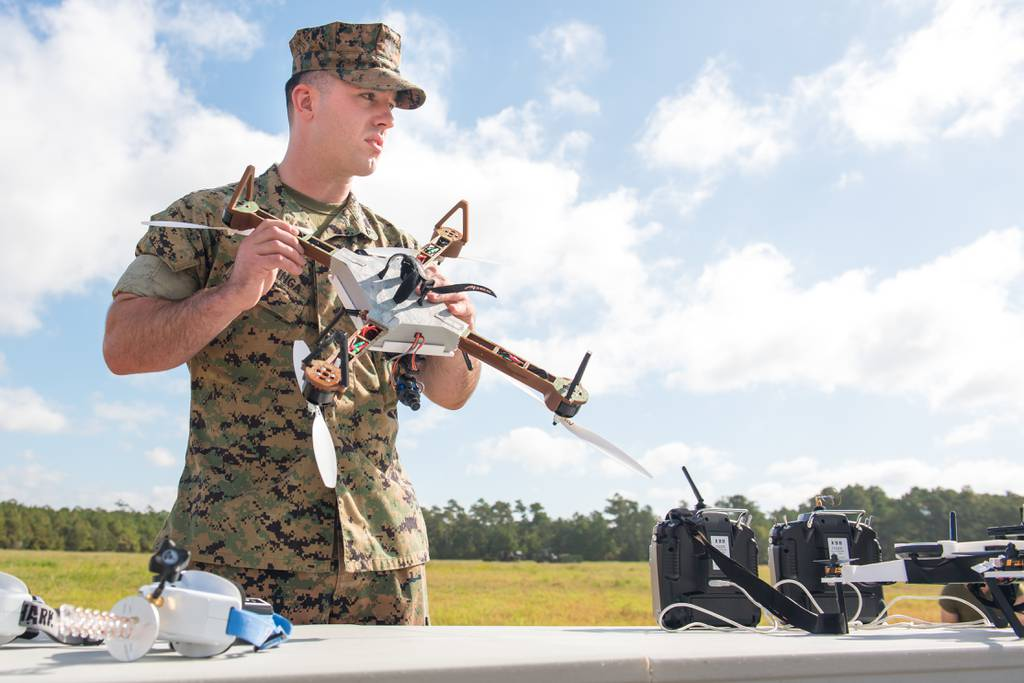
Why carry around drones when they can be printed on the spot?
Army researchers say they can do just that: 3D print a quadcopter airframe. Better yet, they are developing a system to allow soldiers to customize their drones to meet specific mission needs.
“A soldier can input certain specifications – things like range and endurance and necessary payload carrying – and the software tool will tailor a vehicle based on those mission needs, based on what parts are available,” said John Gerbes, a mechanical engineer at Army Research Lab (ARL).
ARL has been coordinating with the Marine Corps as the likely end-user of such a system. Early research led to a 2016 demonstration at U.S. Army Training and Doctrine Command’s annual Army Expeditionary Warrior Experiment, or AEWE, at Fort Benning, Georgia, and a second demonstration in fall 2017 at Camp Lejeune, North Carolina.
That 2016 trial sent engineers back to the lab to fine-tune their offerings. While their system could deliver a 3D-printed drone, developers discovered potential end users wanted some specific features.
“One surprise was in the sophistication of information they desired. They wanted a much deeper breakdown of system tradeoffs: ‘If I do this, performance does that,’” Gerbes said. “So we created a dashboard where they can actually drag stuff around, where they can adjust range and endurance and payload in one vehicle versus another.”
The Army is not alone in offering up a vision for a 3D-printed drone. Hobbyists can download instructions for build-it-yourself copters and can even buy ready-made printable drone kits on Amazon. YouTube offers video tutorials.
The military-grade project looks to go beyond these commercials offerings, by making available the widest possible range of vehicles. “Our emphasis is on inherent flexibility,” Gerbes said. “It’s not just about providing a 3D-printed UAV but about providing a suite of tool to meet mission-specific needs.”
Toolkit for flight
Army planners say they envision a portable set of interchangeable components that could be used to build a wide assortment of drones. Ideally, a 3-D printer would churn out the frame, while a selection of motors, sensors, cameras and other apparatus could be selected from a standing inventory.
“It’s an integrated system model that allows you to match the mission to the components,” said Eric Spero, a team lead within ARL’s vehicle technology directorate. “If I know what mission I need to accomplish, I want to be able to select the most appropriate electronics and combine that with a pre-defined structure.”
As envisioned, the system will apply sophisticated software protocols to determine the optimal design for a given mission. Users would input needs such as size, weight and endurance, “and the software can filter the catalog around those criteria to get the best matched solutions,” Spero said.
The use of 3D printing, or additive technology, makes it possible to create these ad hoc solutions to meet a broad range of requirements. Rather than carry parts and pieces for every possible configuration, soldiers will be able to manufacture on the fly those components that best suit the need.
Source: For the Army, a 3-D printed drone is nice. A customized, 3-D printed drone is better. (c4isrnet.com)